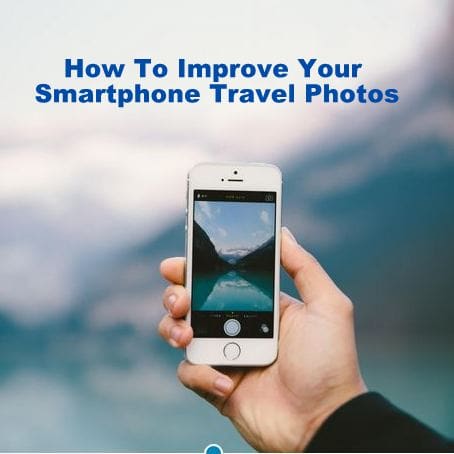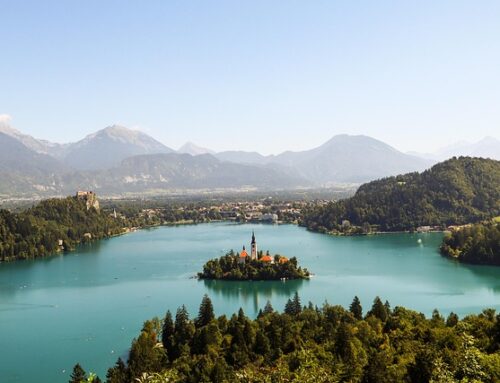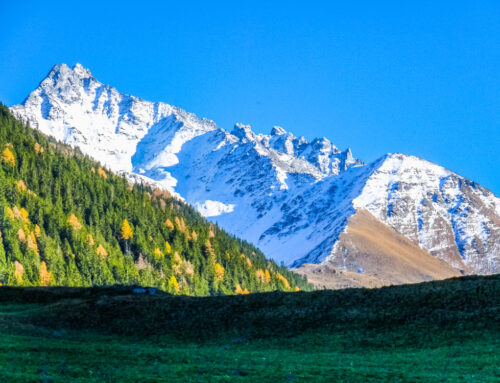How To Improve Your Smartphone Travel Photos

Here’s How To Take Even Better Travel Pictures

Traveling is an opportunity to experience different cultures, meet new people, and learn new life skills. It’s an undeniable chance to make memories that can be cherished for a lifetime. Documenting your travels to share with loved ones and friends makes it even more special and memorable. The best and simplest way to document your trips is to capture them in photographs which can be done nowadays just by using your trusty smartphone. But are you following best practices to improve your smartphone travel photos?
Thanks to today’s advancements in technology, you won’t have to fumble using heavy, bulky, and fragile cameras to take photos of your adventures. With today’s smartphone cameras and image editing platforms, any photo taken using a smartphone can look professional. Below are some tips to make your smartphone photography skills on point for your next trip!
Tip #1: Know Your Phone
Like cameras, not every phone is built the same. This means that each phone including their built-in cameras has specific specs and specializations. It’s important to know your phone camera’s lens, focal length, and sensor size. Contrary to popular belief, a higher megapixel value doesn’t always guarantee better photo quality since it will also depend on the size of the camera sensor. For example, if an 8 Megapixel (MP) camera is compared with a 12 MP camera, the latter would ideally produce better images. However, if the two cameras have the same sensor size, the 8MP camera would produce better images since its sensor is ideal for smaller pixel images as opposed to the 12 MP camera with a similar camera sensor size.
It is also important to be aware of your phone’s memory capacity and battery life when taking photos while traveling. You never want to be in a beautiful spot and not be able to take pictures because your phone’s memory is full or its battery has no charge. Equipping your phone with high performance, high capacity memory cards as well as bringing portable and wireless phone chargers handy are advisable. With all this information, you will be able to maximize your phone for your trips.
Tip #2: Prioritize Good Lighting
Most smartphones perform poorly in low light conditions. Unless you own a high-end smartphone with an exceptional camera, this is a big problem. It is always best to shoot photos in well-lit areas to counteract this natural hurdle for smartphones. This involves shooting in areas with abundant natural light and during certain hours of a day such as during sunrise or sunset. These periods of the day are highly recommended as lighting around sunrise and sunset gives out softer lights and soothing shadows that are perfect for photography. If natural light is unavailable, artificial light can still be used.
Tip #3: Compose Your Images
Image composition is also essential in travel photography as it’s a way to put a narrative in an image Image composition is the arrangement of visual elements in an image, utilizing them to emphasize certain objects or lines in your photo. Try doing some of the following and give your photos that extra push to look professional::
Choose Your Subject
Although most travel spots have a ton of subjects that can be the focus of your photograph, it’s important not to be tempted by showcasing and emphasizing everything. To take a photo’s composition to another level, limiting your point of interest on one or just a few subjects. It can be a person, a beautiful tree, or an old building. Avoid overloading your photo and remember that less is more.
You can also use the “Rule of Thirds” when capturing photos. To do this, make sure the grid lines on your camera is turned on. Then, when framing photos, place your subject near or along the lines of your camera’s grid lines.
Symmetry, Patterns, & Lines
When utilized properly, these elements of composition create aesthetically pleasing images. Symmetry, combined with a strong point of interest can evoke a feeling of harmony and balance. Meanwhile, patterns, when shot properly, give out the sense of enormity and scale of an object due to its seemingly unending repetitions. Lastly, lines impact an image significantly by drawing a viewer’s eye to a focal point. These lines are used to emphasize a photo’s subject as well as give the image flow and direction.
Photos of People
Incorporating human elements give a sense of the enormity of space especially when showcasing a vast landscape. For example, putting a famous landmark at the background with locals all around them makes photos look more personal and candid, giving the viewer an idea as to how the daily life is in that particular spot.
#4: Don’t Take Post-Processing for Granted
Although most phones have built-in photo editing apps, it is always best to download photo photo-editing apps on your phone. These external apps come with presets, advanced settings and tools to help you improve your photo and bring out its full potential. These photography apps include Adobe Lightroom CC, VSCO, Snapseed, as well as Instagram. If utilized correctly, these apps can help you in producing professional-looking travel images that you can share with loved ones, friends, and the world.




